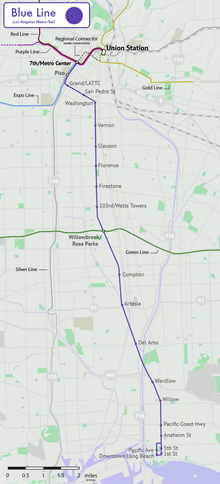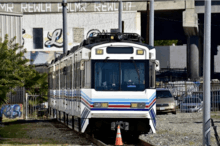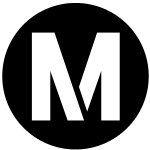Blue Line (Los Angeles Metro)
|
| |||||||||||||||||||||||||||||||||||||||||||||||||||||||||||||||||||||||||||||||||||||||||||||||||||||||||||||||||||||||||||||||||||||||||||||||||||||||||||||||||||||||||||||||||||||||||||||||||||||||||||||||||||||||||||||||||||||||||||||||||||||||||||||||||||||||||||||||||||||||||||||||||||||||||||||||||||||||||||||||||||||||||||||||||||||||||||||||||||||||||||||||||||||||||||||||||||||||||||||||||||||||||||||||||||||||||||||||||||||||||||||||||||||||||||||||||||||||||||||||||||||||||||||||||||||||||||||||||||||||||||||||||||||||||||||||||||||||||||||||||||||||||||||||||||||||||||||||||||||||||
|
Metro Blue Line train heading to Long Beach arrives at Willow Street station. | |||||||||||||||||||||||||||||||||||||||||||||||||||||||||||||||||||||||||||||||||||||||||||||||||||||||||||||||||||||||||||||||||||||||||||||||||||||||||||||||||||||||||||||||||||||||||||||||||||||||||||||||||||||||||||||||||||||||||||||||||||||||||||||||||||||||||||||||||||||||||||||||||||||||||||||||||||||||||||||||||||||||||||||||||||||||||||||||||||||||||||||||||||||||||||||||||||||||||||||||||||||||||||||||||||||||||||||||||||||||||||||||||||||||||||||||||||||||||||||||||||||||||||||||||||||||||||||||||||||||||||||||||||||||||||||||||||||||||||||||||||||||||||||||||||||||||||||||||||||||||
| Overview | |||||||||||||||||||||||||||||||||||||||||||||||||||||||||||||||||||||||||||||||||||||||||||||||||||||||||||||||||||||||||||||||||||||||||||||||||||||||||||||||||||||||||||||||||||||||||||||||||||||||||||||||||||||||||||||||||||||||||||||||||||||||||||||||||||||||||||||||||||||||||||||||||||||||||||||||||||||||||||||||||||||||||||||||||||||||||||||||||||||||||||||||||||||||||||||||||||||||||||||||||||||||||||||||||||||||||||||||||||||||||||||||||||||||||||||||||||||||||||||||||||||||||||||||||||||||||||||||||||||||||||||||||||||||||||||||||||||||||||||||||||||||||||||||||||||||||||||||||||||||||
|---|---|---|---|---|---|---|---|---|---|---|---|---|---|---|---|---|---|---|---|---|---|---|---|---|---|---|---|---|---|---|---|---|---|---|---|---|---|---|---|---|---|---|---|---|---|---|---|---|---|---|---|---|---|---|---|---|---|---|---|---|---|---|---|---|---|---|---|---|---|---|---|---|---|---|---|---|---|---|---|---|---|---|---|---|---|---|---|---|---|---|---|---|---|---|---|---|---|---|---|---|---|---|---|---|---|---|---|---|---|---|---|---|---|---|---|---|---|---|---|---|---|---|---|---|---|---|---|---|---|---|---|---|---|---|---|---|---|---|---|---|---|---|---|---|---|---|---|---|---|---|---|---|---|---|---|---|---|---|---|---|---|---|---|---|---|---|---|---|---|---|---|---|---|---|---|---|---|---|---|---|---|---|---|---|---|---|---|---|---|---|---|---|---|---|---|---|---|---|---|---|---|---|---|---|---|---|---|---|---|---|---|---|---|---|---|---|---|---|---|---|---|---|---|---|---|---|---|---|---|---|---|---|---|---|---|---|---|---|---|---|---|---|---|---|---|---|---|---|---|---|---|---|---|---|---|---|---|---|---|---|---|---|---|---|---|---|---|---|---|---|---|---|---|---|---|---|---|---|---|---|---|---|---|---|---|---|---|---|---|---|---|---|---|---|---|---|---|---|---|---|---|---|---|---|---|---|---|---|---|---|---|---|---|---|---|---|---|---|---|---|---|---|---|---|---|---|---|---|---|---|---|---|---|---|---|---|---|---|---|---|---|---|---|---|---|---|---|---|---|---|---|---|---|---|---|---|---|---|---|---|---|---|---|---|---|---|---|---|---|---|---|---|---|---|---|---|---|---|---|---|---|---|---|---|---|---|---|---|---|---|---|---|---|---|---|---|---|---|---|---|---|---|---|---|---|---|---|---|---|---|---|---|---|---|---|---|---|---|---|---|---|---|---|---|---|---|---|---|---|---|---|---|---|---|---|---|---|---|---|---|---|---|---|---|---|---|---|---|---|---|---|---|---|---|---|---|---|---|---|---|---|---|---|---|---|---|---|---|---|---|---|---|---|---|---|---|---|---|---|---|---|---|---|---|---|---|---|---|---|---|---|---|---|---|---|---|---|---|---|---|---|---|---|---|---|---|---|---|---|---|---|---|---|---|---|---|---|---|---|---|---|---|---|---|---|---|---|---|---|---|---|---|---|---|---|---|---|---|---|---|---|---|---|---|---|---|---|---|---|---|---|---|---|---|---|---|---|---|---|---|---|---|---|---|---|---|---|---|---|---|---|---|---|---|---|---|---|---|---|---|---|---|---|---|---|---|---|---|---|---|---|---|---|---|---|---|---|---|---|---|---|
| Owner | Metro Rail | ||||||||||||||||||||||||||||||||||||||||||||||||||||||||||||||||||||||||||||||||||||||||||||||||||||||||||||||||||||||||||||||||||||||||||||||||||||||||||||||||||||||||||||||||||||||||||||||||||||||||||||||||||||||||||||||||||||||||||||||||||||||||||||||||||||||||||||||||||||||||||||||||||||||||||||||||||||||||||||||||||||||||||||||||||||||||||||||||||||||||||||||||||||||||||||||||||||||||||||||||||||||||||||||||||||||||||||||||||||||||||||||||||||||||||||||||||||||||||||||||||||||||||||||||||||||||||||||||||||||||||||||||||||||||||||||||||||||||||||||||||||||||||||||||||||||||||||||||||||||||
| Transit type | Light rail | ||||||||||||||||||||||||||||||||||||||||||||||||||||||||||||||||||||||||||||||||||||||||||||||||||||||||||||||||||||||||||||||||||||||||||||||||||||||||||||||||||||||||||||||||||||||||||||||||||||||||||||||||||||||||||||||||||||||||||||||||||||||||||||||||||||||||||||||||||||||||||||||||||||||||||||||||||||||||||||||||||||||||||||||||||||||||||||||||||||||||||||||||||||||||||||||||||||||||||||||||||||||||||||||||||||||||||||||||||||||||||||||||||||||||||||||||||||||||||||||||||||||||||||||||||||||||||||||||||||||||||||||||||||||||||||||||||||||||||||||||||||||||||||||||||||||||||||||||||||||||
| Line number | 801 | ||||||||||||||||||||||||||||||||||||||||||||||||||||||||||||||||||||||||||||||||||||||||||||||||||||||||||||||||||||||||||||||||||||||||||||||||||||||||||||||||||||||||||||||||||||||||||||||||||||||||||||||||||||||||||||||||||||||||||||||||||||||||||||||||||||||||||||||||||||||||||||||||||||||||||||||||||||||||||||||||||||||||||||||||||||||||||||||||||||||||||||||||||||||||||||||||||||||||||||||||||||||||||||||||||||||||||||||||||||||||||||||||||||||||||||||||||||||||||||||||||||||||||||||||||||||||||||||||||||||||||||||||||||||||||||||||||||||||||||||||||||||||||||||||||||||||||||||||||||||||
| Number of stations | 22 | ||||||||||||||||||||||||||||||||||||||||||||||||||||||||||||||||||||||||||||||||||||||||||||||||||||||||||||||||||||||||||||||||||||||||||||||||||||||||||||||||||||||||||||||||||||||||||||||||||||||||||||||||||||||||||||||||||||||||||||||||||||||||||||||||||||||||||||||||||||||||||||||||||||||||||||||||||||||||||||||||||||||||||||||||||||||||||||||||||||||||||||||||||||||||||||||||||||||||||||||||||||||||||||||||||||||||||||||||||||||||||||||||||||||||||||||||||||||||||||||||||||||||||||||||||||||||||||||||||||||||||||||||||||||||||||||||||||||||||||||||||||||||||||||||||||||||||||||||||||||||
| Daily ridership | 73,930 (Dec. 2017; avg. weekday)[1] | ||||||||||||||||||||||||||||||||||||||||||||||||||||||||||||||||||||||||||||||||||||||||||||||||||||||||||||||||||||||||||||||||||||||||||||||||||||||||||||||||||||||||||||||||||||||||||||||||||||||||||||||||||||||||||||||||||||||||||||||||||||||||||||||||||||||||||||||||||||||||||||||||||||||||||||||||||||||||||||||||||||||||||||||||||||||||||||||||||||||||||||||||||||||||||||||||||||||||||||||||||||||||||||||||||||||||||||||||||||||||||||||||||||||||||||||||||||||||||||||||||||||||||||||||||||||||||||||||||||||||||||||||||||||||||||||||||||||||||||||||||||||||||||||||||||||||||||||||||||||||
| Annual ridership | 22,383,828 (2017)[1] | ||||||||||||||||||||||||||||||||||||||||||||||||||||||||||||||||||||||||||||||||||||||||||||||||||||||||||||||||||||||||||||||||||||||||||||||||||||||||||||||||||||||||||||||||||||||||||||||||||||||||||||||||||||||||||||||||||||||||||||||||||||||||||||||||||||||||||||||||||||||||||||||||||||||||||||||||||||||||||||||||||||||||||||||||||||||||||||||||||||||||||||||||||||||||||||||||||||||||||||||||||||||||||||||||||||||||||||||||||||||||||||||||||||||||||||||||||||||||||||||||||||||||||||||||||||||||||||||||||||||||||||||||||||||||||||||||||||||||||||||||||||||||||||||||||||||||||||||||||||||||
| Website | Blue Line | ||||||||||||||||||||||||||||||||||||||||||||||||||||||||||||||||||||||||||||||||||||||||||||||||||||||||||||||||||||||||||||||||||||||||||||||||||||||||||||||||||||||||||||||||||||||||||||||||||||||||||||||||||||||||||||||||||||||||||||||||||||||||||||||||||||||||||||||||||||||||||||||||||||||||||||||||||||||||||||||||||||||||||||||||||||||||||||||||||||||||||||||||||||||||||||||||||||||||||||||||||||||||||||||||||||||||||||||||||||||||||||||||||||||||||||||||||||||||||||||||||||||||||||||||||||||||||||||||||||||||||||||||||||||||||||||||||||||||||||||||||||||||||||||||||||||||||||||||||||||||
| Operation | |||||||||||||||||||||||||||||||||||||||||||||||||||||||||||||||||||||||||||||||||||||||||||||||||||||||||||||||||||||||||||||||||||||||||||||||||||||||||||||||||||||||||||||||||||||||||||||||||||||||||||||||||||||||||||||||||||||||||||||||||||||||||||||||||||||||||||||||||||||||||||||||||||||||||||||||||||||||||||||||||||||||||||||||||||||||||||||||||||||||||||||||||||||||||||||||||||||||||||||||||||||||||||||||||||||||||||||||||||||||||||||||||||||||||||||||||||||||||||||||||||||||||||||||||||||||||||||||||||||||||||||||||||||||||||||||||||||||||||||||||||||||||||||||||||||||||||||||||||||||||
| Began operation | July 14, 1990 | ||||||||||||||||||||||||||||||||||||||||||||||||||||||||||||||||||||||||||||||||||||||||||||||||||||||||||||||||||||||||||||||||||||||||||||||||||||||||||||||||||||||||||||||||||||||||||||||||||||||||||||||||||||||||||||||||||||||||||||||||||||||||||||||||||||||||||||||||||||||||||||||||||||||||||||||||||||||||||||||||||||||||||||||||||||||||||||||||||||||||||||||||||||||||||||||||||||||||||||||||||||||||||||||||||||||||||||||||||||||||||||||||||||||||||||||||||||||||||||||||||||||||||||||||||||||||||||||||||||||||||||||||||||||||||||||||||||||||||||||||||||||||||||||||||||||||||||||||||||||||
| Operator(s) |
| ||||||||||||||||||||||||||||||||||||||||||||||||||||||||||||||||||||||||||||||||||||||||||||||||||||||||||||||||||||||||||||||||||||||||||||||||||||||||||||||||||||||||||||||||||||||||||||||||||||||||||||||||||||||||||||||||||||||||||||||||||||||||||||||||||||||||||||||||||||||||||||||||||||||||||||||||||||||||||||||||||||||||||||||||||||||||||||||||||||||||||||||||||||||||||||||||||||||||||||||||||||||||||||||||||||||||||||||||||||||||||||||||||||||||||||||||||||||||||||||||||||||||||||||||||||||||||||||||||||||||||||||||||||||||||||||||||||||||||||||||||||||||||||||||||||||||||||||||||||||||
| Character | Mostly at-grade in private right-of-way, with some street-running, elevated and underground sections. | ||||||||||||||||||||||||||||||||||||||||||||||||||||||||||||||||||||||||||||||||||||||||||||||||||||||||||||||||||||||||||||||||||||||||||||||||||||||||||||||||||||||||||||||||||||||||||||||||||||||||||||||||||||||||||||||||||||||||||||||||||||||||||||||||||||||||||||||||||||||||||||||||||||||||||||||||||||||||||||||||||||||||||||||||||||||||||||||||||||||||||||||||||||||||||||||||||||||||||||||||||||||||||||||||||||||||||||||||||||||||||||||||||||||||||||||||||||||||||||||||||||||||||||||||||||||||||||||||||||||||||||||||||||||||||||||||||||||||||||||||||||||||||||||||||||||||||||||||||||||||
| Number of vehicles |
Nippon Sharyo P2020 Siemens P2000 Kinkisharyo P3010 | ||||||||||||||||||||||||||||||||||||||||||||||||||||||||||||||||||||||||||||||||||||||||||||||||||||||||||||||||||||||||||||||||||||||||||||||||||||||||||||||||||||||||||||||||||||||||||||||||||||||||||||||||||||||||||||||||||||||||||||||||||||||||||||||||||||||||||||||||||||||||||||||||||||||||||||||||||||||||||||||||||||||||||||||||||||||||||||||||||||||||||||||||||||||||||||||||||||||||||||||||||||||||||||||||||||||||||||||||||||||||||||||||||||||||||||||||||||||||||||||||||||||||||||||||||||||||||||||||||||||||||||||||||||||||||||||||||||||||||||||||||||||||||||||||||||||||||||||||||||||||
| Train length | 2–3 vehicles | ||||||||||||||||||||||||||||||||||||||||||||||||||||||||||||||||||||||||||||||||||||||||||||||||||||||||||||||||||||||||||||||||||||||||||||||||||||||||||||||||||||||||||||||||||||||||||||||||||||||||||||||||||||||||||||||||||||||||||||||||||||||||||||||||||||||||||||||||||||||||||||||||||||||||||||||||||||||||||||||||||||||||||||||||||||||||||||||||||||||||||||||||||||||||||||||||||||||||||||||||||||||||||||||||||||||||||||||||||||||||||||||||||||||||||||||||||||||||||||||||||||||||||||||||||||||||||||||||||||||||||||||||||||||||||||||||||||||||||||||||||||||||||||||||||||||||||||||||||||||||
| Technical | |||||||||||||||||||||||||||||||||||||||||||||||||||||||||||||||||||||||||||||||||||||||||||||||||||||||||||||||||||||||||||||||||||||||||||||||||||||||||||||||||||||||||||||||||||||||||||||||||||||||||||||||||||||||||||||||||||||||||||||||||||||||||||||||||||||||||||||||||||||||||||||||||||||||||||||||||||||||||||||||||||||||||||||||||||||||||||||||||||||||||||||||||||||||||||||||||||||||||||||||||||||||||||||||||||||||||||||||||||||||||||||||||||||||||||||||||||||||||||||||||||||||||||||||||||||||||||||||||||||||||||||||||||||||||||||||||||||||||||||||||||||||||||||||||||||||||||||||||||||||||
| System length | 22.0 mi (35.4 km)[2] | ||||||||||||||||||||||||||||||||||||||||||||||||||||||||||||||||||||||||||||||||||||||||||||||||||||||||||||||||||||||||||||||||||||||||||||||||||||||||||||||||||||||||||||||||||||||||||||||||||||||||||||||||||||||||||||||||||||||||||||||||||||||||||||||||||||||||||||||||||||||||||||||||||||||||||||||||||||||||||||||||||||||||||||||||||||||||||||||||||||||||||||||||||||||||||||||||||||||||||||||||||||||||||||||||||||||||||||||||||||||||||||||||||||||||||||||||||||||||||||||||||||||||||||||||||||||||||||||||||||||||||||||||||||||||||||||||||||||||||||||||||||||||||||||||||||||||||||||||||||||||
| No. of tracks | 2 | ||||||||||||||||||||||||||||||||||||||||||||||||||||||||||||||||||||||||||||||||||||||||||||||||||||||||||||||||||||||||||||||||||||||||||||||||||||||||||||||||||||||||||||||||||||||||||||||||||||||||||||||||||||||||||||||||||||||||||||||||||||||||||||||||||||||||||||||||||||||||||||||||||||||||||||||||||||||||||||||||||||||||||||||||||||||||||||||||||||||||||||||||||||||||||||||||||||||||||||||||||||||||||||||||||||||||||||||||||||||||||||||||||||||||||||||||||||||||||||||||||||||||||||||||||||||||||||||||||||||||||||||||||||||||||||||||||||||||||||||||||||||||||||||||||||||||||||||||||||||||
| Track gauge |
4 ft 8 1⁄2 in (1,435 mm) (standard gauge) | ||||||||||||||||||||||||||||||||||||||||||||||||||||||||||||||||||||||||||||||||||||||||||||||||||||||||||||||||||||||||||||||||||||||||||||||||||||||||||||||||||||||||||||||||||||||||||||||||||||||||||||||||||||||||||||||||||||||||||||||||||||||||||||||||||||||||||||||||||||||||||||||||||||||||||||||||||||||||||||||||||||||||||||||||||||||||||||||||||||||||||||||||||||||||||||||||||||||||||||||||||||||||||||||||||||||||||||||||||||||||||||||||||||||||||||||||||||||||||||||||||||||||||||||||||||||||||||||||||||||||||||||||||||||||||||||||||||||||||||||||||||||||||||||||||||||||||||||||||||||||
| Electrification | 750 V DC overhead catenary | ||||||||||||||||||||||||||||||||||||||||||||||||||||||||||||||||||||||||||||||||||||||||||||||||||||||||||||||||||||||||||||||||||||||||||||||||||||||||||||||||||||||||||||||||||||||||||||||||||||||||||||||||||||||||||||||||||||||||||||||||||||||||||||||||||||||||||||||||||||||||||||||||||||||||||||||||||||||||||||||||||||||||||||||||||||||||||||||||||||||||||||||||||||||||||||||||||||||||||||||||||||||||||||||||||||||||||||||||||||||||||||||||||||||||||||||||||||||||||||||||||||||||||||||||||||||||||||||||||||||||||||||||||||||||||||||||||||||||||||||||||||||||||||||||||||||||||||||||||||||||
| |||||||||||||||||||||||||||||||||||||||||||||||||||||||||||||||||||||||||||||||||||||||||||||||||||||||||||||||||||||||||||||||||||||||||||||||||||||||||||||||||||||||||||||||||||||||||||||||||||||||||||||||||||||||||||||||||||||||||||||||||||||||||||||||||||||||||||||||||||||||||||||||||||||||||||||||||||||||||||||||||||||||||||||||||||||||||||||||||||||||||||||||||||||||||||||||||||||||||||||||||||||||||||||||||||||||||||||||||||||||||||||||||||||||||||||||||||||||||||||||||||||||||||||||||||||||||||||||||||||||||||||||||||||||||||||||||||||||||||||||||||||||||||||||||||||||||||||||||||||||||
The Blue Line is a 22.0-mile (35.4 km) light rail line running north-south between Los Angeles and Long Beach, California, passing through Downtown Los Angeles, South Los Angeles, Watts, Willowbrook, Compton, Rancho Dominguez and Long Beach in Los Angeles County. It is one of six lines in the Metro Rail system. Opened in 1990, it is the system's oldest and second busiest line with an estimated 22.38 million boardings per year as of December 2017. It is operated by the Los Angeles County Metropolitan Transportation Authority.
The Blue Line passes near the cities of Vernon, Huntington Park, South Gate, Lynwood, and Carson. The famous Watts Towers can be seen from the train near 103rd Street station. The under-construction Regional Connector would directly link this line to Union Station and beyond.
Service description
Route
The Metro Blue Line runs between downtown Los Angeles and downtown Long Beach. The line is 22.0 miles (35.4 km) long, with 22 stations.[2] The line's northern terminus is 7th Street/Metro Center, from which it runs south along Flower Street, sharing tracks with the Expo Line. Passengers can connect to the Metro Silver Line bus rapid transit line at 7th Street/Metro Center and Pico stations. The two lines diverge at Flower Street and Washington Boulevard just south of downtown Los Angeles. Here the Blue Line turns east on Washington Boulevard before turning south on Long Beach Avenue to join the Pacific Electric four-track right-of-way to Willow Station which runs as far as Long Beach where the line follows Long Beach Boulevard to the Long Beach Transit Mall, which is a loop involving Long Beach Boulevard, 1st Street, Pacific Avenue and 8th Street. There are some elevated structures and stations south of downtown Los Angeles as well as a short tunneled section within downtown Los Angeles. The Blue Line connects with the Metro Green Line at Willowbrook station.
Hours of operation
Trains run between approximately 4:45 a.m. and 1:00 a.m. the following morning.[3] On Friday and Saturday evenings, trains are extended until 2:00 a.m. of the following morning. First and last train times are as follows:
To/From Long Beach
- Northbound
- First Train to 7th Street/Metro Center: 4:46 a.m.
- Last Train to 7th Street/Metro Center: 12:03 a.m. (2:07 a.m. on Friday and Saturday evenings)
- Southbound
- First Train to Long Beach: 5:00 a.m.
- Last Train to Long Beach: 1:01 a.m. (2:05 a.m. on Friday and Saturday evenings)
Of note, some trains operate at later or earlier times due to the Blue Line making the turnaround in Downtown Long Beach.
Headways
Trains on the Blue Line operate every six minutes during peak hours Monday through Friday.[4] They operate every twelve minutes during the daytime weekdays and all day on the weekends after approximately 9 a.m. (with a 15-minute headway early Saturday and Sunday mornings). Night service consists of ten-minute headways.
During peak hours, every other train serves only the stations between Willow and 7th Street/Metro Center to decrease the headway on that portion of the route. Willow was chosen because of its proximity to the Blue Line storage yard and because it is the last southbound station with a park-and-ride lot. In the evening rush hour, riders will see some trains destined to "Willow" and others to "Long Beach". Consequently, those riders destined to Long Beach must exit at Willow Station and wait for the next train which will terminate at Downtown Long Beach Station.
Ridership
The Blue Line was projected to have a daily ridership of 5,000.[5] Within the first months of service, daily ridership had reached 12,000, and by the end of the first year of service, daily ridership was at 32,000.[5]
As of July 2011, Metro had estimated the Blue Line had over 90,000 average weekday boardings, and 26.26 million yearly boardings. As of October 2013, the Blue Line had an average weekday ridership of 88,095,[6][7] and Saturday and Sunday boardings of 60,339 and 46,897, respectively,[6] which would correspond to 28.48 million boardings per year.
History
The route's original red car streetcar service, which was operated by Pacific Electric Railway, began service in 1902. In 1958 the remains of the then troubled Pacific Electric Railway and Los Angeles Railway systems were taken over by the original Los Angeles Metropolitan Transit Authority and the line was soon converted to bus operation in 1961. The transit authority was then taken over by the Southern California Rapid Transit District in 1964.
The current line opened on Saturday, July 14, 1990, at a cost of US$877 million.[2] Design and construction was managed by the Rail Construction Corporation, now a subsidiary of the new Los Angeles County Metropolitan Transportation Authority (also known as Metro)[5] which was formed in 1993 by a merger of the Southern California Rapid Transit District and the Los Angeles County Transportation Commission.
Work to allow the current line to continue to Union Station was halted indefinitely after the 1998 county ballot was approved which banned the use of sales tax revenue for subway projects. Work began on a section to Pasadena in 1998 but this was also suspended following the ballot. Adam Schiff subsequently authored a bill that created a separate authority to continue work on the Pasadena section, construction began again in 2000 and on opening it was branded as the Gold Line since there was no direct connection between its starting point at Union Station and the Blue Line. By 2021, these two lines will be joined by the Regional Connector tunnel between the 7th Street station terminus of the Blue Line and Little Tokyo / Arts District station on the now extended Gold Line.
The line was originally operated by two-car trains, but proved more popular than expected and 19 platforms were lengthened to accommodate three-car trains in 2002-2003 at a cost of US $11 million. The three-car trains are composed of articulated double rail units, meaning an effective six-unit train.
In 2006, the Metro Blue Line began using automated stop announcements after the Metro Green and Gold Lines had automated stop announcements since 2004. The announcements do not have the same voice as the Siemens trains operated on the Metro Green Line but is the same voice as the one that can be heard on the other Nippon Sharyo trains used on the Expo Line and the AnsaldoBreda trains of the Metro Red/Purple Lines.
In 2007, many Metro Blue Line intersections underwent extensive track repairs between Willowbrook and Compton, taking place Friday-Sunday nights.
Construction of the Metro Expo Line which links with the Blue Line at 7th Street began in 2006[8] entering service on April 28, 2012.[9]
On December 13, 2009, the Metro Silver Line, Metro's second Metro Transitway (bus rapid transit) line, began service between the Harbor Gateway Transit Center, Downtown Los Angeles and El Monte Station. Unlike the Blue Line, the Silver Line charges extra since the line runs on the I-110 freeway. The Metro Blue Line and the Metro Silver Line are roughly 2–4 miles apart. Some former Blue Line passengers have switched to the Metro Silver Line. When there are delays and technical problems on the Blue Line, Metro temporarily removes the extra charge on the Silver Line so that passengers can use it instead. Ridership has increased on the Metro Silver Line since its opening, but not enough to relieve the Blue Line's ridership.
A six-year, $1.2 billion overhaul of the Blue Line began in late 2014. Tracks, power substations, and overhead wires were replaced and stations were renovated. Improvements to rolling stock include 78 new light rail vehicles for $739 million, and $130 million in upgrades to light rail cars in service.[10] Station upgrades were completed in July 2015.[11]
Proposed developments
Regional Connector Transit Corridor (extension into Downtown Los Angeles)
Metro is currently constructing the Regional Connector, a light rail subway project in Downtown Los Angeles that will connect the Blue and Expo Lines to the Gold Line and allow a seamless one-seat ride between the Blue and Expo Lines' current terminus at 7th Street/Metro Center and Union Station. When this project is completed, Blue Line trains will be able to pass through Downtown Los Angeles to the City of Azusa.
Currently, to reach Union Station, passengers must transfer to the Red or Purple line from 7th Street/Metro Center; yet, once the Regional Connector project is completed, the Blue Line will be able to travel to Azusa, while the Gold line will be able to travel to Santa Monica.
Colors for these new lines have not yet been officially announced, but it seems likely that the current Blue Line and the Pasadena/Foothill northern section of the Gold Line will become the new Blue Line, while the Expo Line and the Eastside leg of the Gold Line will become the new Gold Line. The groundbreaking for the construction of the Regional Connector Transit Corridor took place on September 30, 2014, and it is expected to be in public service by late 2021.
Blue Line Renovation project
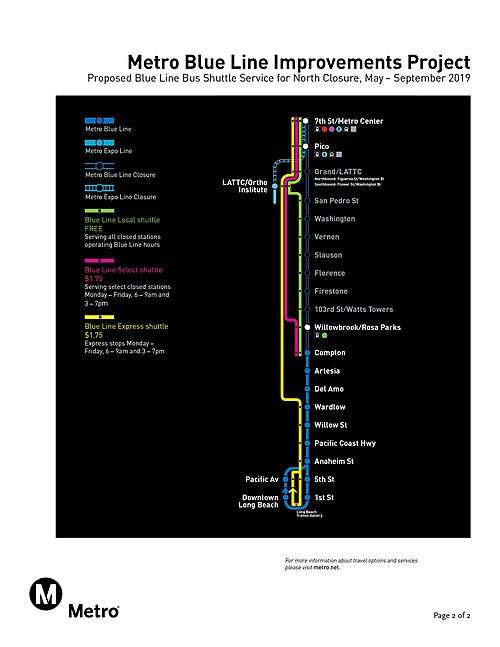
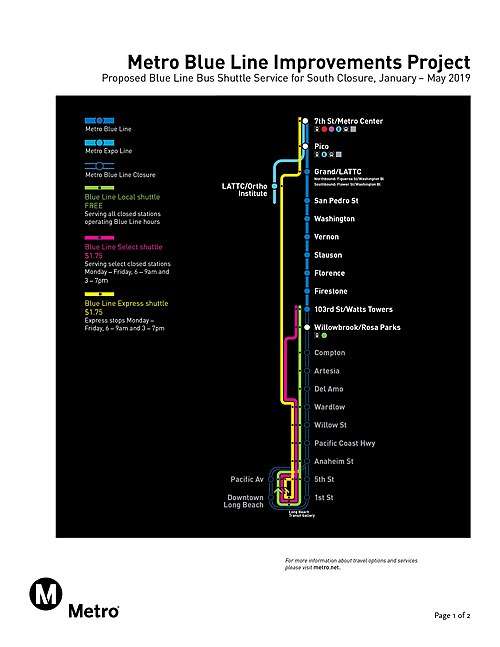
Metro announced in March 2018 that it has prepared to begin renovation work along the entire route, starting in January 2019.[12] The renovation would be conducted in two phases: from January to May, the southern leg of the Blue Line (from Willowbrook/Rosa Parks to Downtown Long Beach) would be shut down, while the northern section (7th/Metro to Willowbrook/Rosa Parks) would remain operational. From May to September, the northern leg of the route would be shut down while work begins on the second phase of the project, with the southern portion resuming service starting in early May. As a result of the renovation, Metro would institute shuttle bus service to replicate the Blue Line route in each of the two phases: Willowbrook/Rosa Parks to Downtown Long Beach during phase one, Willowbrook/Rosa Parks to 7th Street/Metro Center during phase two. The Expo Line is also affected for the first 3 weeks of phase two between LATTC/Ortho Institute station and 7th Street/Metro Center.
The project would include replacement of rail tracks and overhead wiring, signal upgrades, refurbishment of aerial rail bridges (including the elevated platforms at the Slauson, Firestone, and Del Amo stations), and a complete rebuild of the Willowbrook/Rosa Parks station. The renovation is expected to be completed by the opening of the Crenshaw/LAX Line, which is scheduled to begin revenue service by October 2019.[13][14]
Current issues
Capacity limits
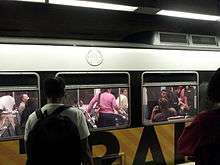
The line often operates at capacity, and various options to increase capacity have been considered, such as four-car trains or more frequent trains. Both have problems: it would be difficult or impossible to lengthen some of the station platforms, and the number of trains already causes delays for other vehicles at level crossings. Thus it may not be possible to increase Blue Line ridership without an extremely expensive grade-separation project, either by elevation, by an entrenchment method similar to that used by the nearby Alameda Corridor freight rail "expressway", or by building another parallel transit corridor to relieve capacity strains from the Blue Line. When the Regional Connector project linking Blue and Expo Line tracks with the Gold Line tracks in Little Tokyo is completed, this may result in even more capacity problems, with ridership expected to grow even more once the connector is open for service.
Safety at level crossings
Over 120 motorists and pedestrians have been killed at Blue Line level crossings since 1990 and there have been more than 800 collisions,[15][16] making the line easily the country's deadliest and most collision-prone rail line.[17]
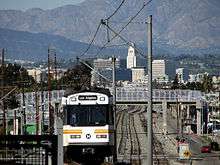
In 1998, the MTA commissioned Booz Allen Hamilton, Inc. to evaluate the cause of Blue Line collisions and recommend affordable solutions. The study reported the high ridership (over 70,000 per day) was a contributor:
- "The MBL has one of the highest ridership counts for light rail lines in the Country. This factor is perhaps the most important contributor to the grade crossing accident rate. The high ridership results in increased pedestrian traffic near stations as compared to other light rail systems. In addition, although MTA Operations does not allow high passenger loads dictate safe operations, there is pressure to maintain travel times and headway schedule requirements (e.g., passenger trip from Los Angeles to Long Beach in less than one hour)."
Other identified contributing factors were the high local population density that leads to more pedestrian and vehicular traffic around the tracks, diverse varied socio-economic community around the line that creates literacy and language difficulties for public education campaigns, driver frustration due to the slow traffic speeds around the line that leads to more risk taking behavior, and the shared right-of-way with freight traffic in the fastest running section from Washington station to Willow station, where trains operate at a maximum of 55 mph (89 km/h) between stations.
The collision rate has declined somewhat following the installation of four-quadrant gates at some crossings where the Blue Line shares the right-of-way with freight rail between Washington station and Del Amo station. The gates prevent drivers from going around lowered gates. In addition, cameras along some problem intersections issue traffic tickets when drivers go around gates. Yet there are still many more collisions and deaths than on comparable lines. On May 9, 2006, a Blue Line train hit a car on Washington Blvd at San Pedro Street. On December 22, 2006, a Metro Blue Line train crashed into a fire truck. The fire truck was on its way to an emergency. On January 26, 2007, a 14-year-old boy named Lavert Baker, Jr. was killed on his way walking home from school by a Blue Line train that was carrying his closest sister.[18]
Recently, a Pedestrian Gate Project had broke ground on the Blue Line as part of the upgrade project for the Blue Line. This project can be found between Watts and Long Beach (Century Blvd - Spring Street)
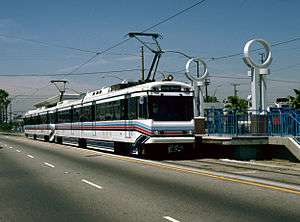
Station listing
The following is the complete list of stations, from north to south.
| Station | Connections/Notes | Date opened | City |
|---|---|---|---|
| 7th Street/Metro Center | Metro Local: 14, 16, 17 18, 20, 37, 51, 52, 53, 55, 60, 62, 66, 70, 71, 76, 78, 79, 81, 96, 316, 351, 355, 378 Metro Express: 442*, 460, 487, 489 Metro Rapid: 720, 760, 770 Antelope Valley Transit Authority: 785* City of Santa Clarita Transit: 799* Foothill Transit: 481*, 493*, 497*, 498*, 499*, 699*, Silver Streak LADOT Commuter Express*: 409, 422, 423, 430, 431, 437, 438, 448, 534 LADOT DASH: A, B, C (weekdays only), DD (weekends only), E, F Montebello Transit: 40, 50, 90*, 341*, 342* Orange County Transportation Authority: 701*, 721* Santa Monica Transit: 10 Torrance Transit: 4* *Indicates commuter service that operates only during weekday rush hours. |
February 15, 1991 | Downtown Los Angeles |
| Pico | Metro Silver Line Metro Local: 30, 81, 330, 442, 460 LADOT DASH: F LADOT Commuter Express: 419, 422, 423, 438, 448 |
July 14, 1990 | |
| Grand/LATTC | Metro Local: 14, 35, 37, 38, 55, 355, 603 LADOT DASH: D, Pico Union/Echo Park |
July 14, 1990 | |
| San Pedro Street | Metro Local: 51, 52, 351 LADOT DASH: E, King-East Montebello Bus Lines: 50 |
July 14, 1990 | Los Angeles (South Central) |
| Washington | Montebello Bus Lines: 50 | July 14, 1990 | |
| Vernon | Metro Local: 105 Metro Rapid: 705 LADOT DASH: Pueblo Del Rio, Southeast |
July 14, 1990 | |
| Slauson | Metro Local: 108, 358 LADOT DASH: Pueblo Del Rio |
July 14, 1990 | |
| Florence | Metro Local: 102, 110, 111, 311, 611 LADOT DASH: Chesterfield Square |
July 14, 1990 | Florence-Graham |
| Firestone | Metro Local: 55, 115, 254, 355 | July 14, 1990 | |
| 103rd Street/Watts Towers | Metro Local: 117, 254, 612 LADOT DASH: Watts |
July 14, 1990 | Los Angeles (Watts) |
| Willowbrook | Metro Local: 55, 120, 202, 205, 355, 612 Gardena Transit: 5 Hahn's Trolley and Shuttle: 1, 2, 3 LADOT DASH Watts Lynwood Trolley Route: D |
July 14, 1990 | Willowbrook |
| Compton | Metro Local: 51, 55*, 60* (Owl Service Only*), 125, 127, 128, 202, 351 Compton Renaissance Transit: 1, 2, 3, 4, 5 Gardena Transit: 3 Greyhound Lines |
July 14, 1990 | Compton |
| Artesia | Metro Local: 60, 130, 202, 205, 260 Metro Rapid: 762 Long Beach Transit: 51, 52, 61 Compton Renaissance Transit: 5 Torrance Transit: 6 |
July 14, 1990 | |
| Del Amo | Metro Local: 202 Carson Circuit Transit System: D, G Long Beach Transit: 1, 191, 192 |
July 14, 1990 | Carson |
| Wardlow | Long Beach Transit: 131, 181, 182 | July 14, 1990 | Long Beach |
| Willow Street | Metro Local: 60 (Late Night/ Owl service only) Long Beach Transit: 51, 52, 101, 102, 103, 104 |
July 14, 1990 | |
| Pacific Coast Highway | Metro Local: 60 (Late Night/ Owl service only) Long Beach Transit: 1, 51, 52, 171, 172, 173, 174, 176ZAP |
July 14, 1990 | |
| Anaheim Street | Metro Local: 60 (Late Night/ Owl service only), 232 Long Beach Transit: 1, 45, 46, 51, 52 |
July 14, 1990 | |
| 5th Street (southbound only) |
Metro Local: 60 (Late Night/ Owl service only), 232 | September 1990 | |
| 1st Street (southbound only) |
Metro Local: 60 (Late Night/ Owl service only), 232 | September 1990 | |
| Downtown Long Beach (northbound only) |
Metro Local: 60 (Late Night/ Owl service only), 232 Long Beach Transit: 1, 21, 22, 46, 51, 52, 61, 71, 72, 81, 91, 92, 93, 94, 111, 112, 121, 151, 172, 173, 174, 181, 182, 191, 192, Passport Commuter Express: 142 Torrance Transit: 3, R3 |
September 1990 | |
| Pacific Avenue (northbound only) |
Long Beach Transit: 1, 51, 52, 81, 91, 92, 93, 94, 172, 173, 174, 182 (151, 181, 191, 192 on nearby 3rd Street)
Torrance Transit : 3, R3 |
September 1990 |
Operations
On Metro Rail Operations' internal timetables, the Blue Line is called line 801.
Maintenance facilities
The Blue Line is operated out of the Division 11 Yard (208th Street Yard) located at 4170 East 208th Street. This yard stores the fleet used on the Blue Line. It is also where heavy maintenance is done on the fleet. The Yard is located between Del Amo and Wardlow stations. Trains get to this yard via a wye junction on the southbound tracks. Northbound trains can enter and exit the yard via the cross tracks on the north and south side of the junction.
Rolling stock
The Blue Line uses cars from the Nippon Sharyo company. Although three-car lengths are the norm due to high ridership, some two-car pairs and rarely one-car pair are used late at night and on weekend mornings.
When the Blue Line opened, the line originally had 54 cars (P865; 100-153). In 2000, the Blue Line added 15 cars (P2020; 154-168) from the Metro Green Line after the Green Line began using Siemens P2000 cars.[19] The Blue Line currently has 69 train cars in its fleet.
Currently, 66 cars are in the yellow/white livery. Past livery was sky/light/dark blue and red lines on white. In 2000, Cars 109 and 148 were painted red to celebrate an anniversary of the Pacific Electric Railway. These red-painted cars were repainted to a silver livery, similar to the 700-750 series cars,[20] but in 2008, Cars 109 and 148 were repainted to match most of the fleet. Also, Car 105 uses a livery that is all white with black lettering, similar to Car 302. As of August 2013, Car 148 debuted a new livery featuring "bold reflective yellow markings and white super-graphics overlaid onto painted cool greys … intended for the entire rail fleet."[21]
The Blue Line uses Nippon Sharyo P865 & P2020 and Siemens P2000 trains, which are in use on both the Blue and Expo lines. Kinki Sharyo P3010 trains are also used, but are becoming common to operate on the line.
Blue Line vehicles are maintained and stored at the Division 11 yard in Long Beach between Del Amo and Wardlow stations. This facility has capacity for storing and maintaining 86 light rail cars.
During the process of retiring the Nippon Sharyo P865s, cars 110, 130, and 120 had been reverted to its original livery when the Blue Line first open in 1990. These cars are being used in an upcoming film Captain Marvel,which is set in the 1990s. However, they still have modernized equipment such as the LED lights and the current Metro logo on the sides.
Incidents
- In September 13, 2008 a Blue Line train struck a Metro bus on one of the tracks; 15 people were injured. A mechanic was taking the bus on a test run and was not injured.[22] This incident happened only one week after the 2008 Chatsworth train collision in which 25 people died following a head-on collision between a Metrolink train and a freight train.
- In November 2009 a woman was struck and killed by a train near the Willowbrook station.
- In December 2009, a 65-year-old man was struck and killed by an oncoming train at the intersection of Long Beach Avenue and Vernon Avenue as the train was approaching Vernon station.
- In January 2010, an automobile collided with a Blue Line train at Washington and Olive.
- In July 2010, a Blue Line train which reportedly ran a red light struck a police cruiser on 16th Street & Long Beach Boulevard.[23]
- In the same month eight people were injured, six of whom were aboard the bus when a Blue Line train collided with another Metro bus at Broadway and Washington Boulevard.[24]
In popular culture
- At the opening of the Blue Line, an exclusive VHS tape starring the Teenage Mutant Ninja Turtles was given out for free. In it, the Turtles work to promote the new train line.[25]
- In Training Day, as the 2 main characters are driving through South Central Los Angeles next to the Blue Line tracks, a train can be heard sounding off its horn right before it passes them in the opposite direction. Shortly afterwards, another Blue Line train can be seen on an elevated bridge.
- In the 2003 remake of The Italian Job, the main characters drive their BMW Mini Coopers into the 7th Street / Metro Center station, standing in for the Hollywood/Highland Red Line Station, and are nearly hit by a Blue Line train. The character Lyle cuts all power to the station, stopping the trains.
- In Heat, the movie opens with Neil McCauley (Robert De Niro) getting off a train at Firestone station. A Blue Line train is also featured on the movie poster.
- The final scene of Collateral takes place on the Blue Line, starting at 7th Street/Metro Center (Los Angeles Metro station) and then heading south.
- In White Men Can't Jump, a Blue Line train can be seen.
- In The Purge: Anarchy, the main characters attempt to elude roving gangs of marauders by descending into a Blue Line subway line entrance. While walking down the tracks in the subway tunnel they are pursued by marauders on dune buggies. The two groups exchange heavy gunfire and the pursuers are destroyed when one of the vehicles overturns and explodes in flame.[26]
References
- 1 2 "Metro Estimated Ridership Stats". Los Angeles County Metropolitan Transportation Authority. Retrieved February 6, 2018.
- 1 2 3 "Facts at a Glance". Los Angeles County Metropolitan Transit Authority. November 18, 2013. Retrieved November 16, 2013.
- ↑ "Blue line timetable" (PDF). Los Angeles County Metropolitan Transit Authority. December 15, 2013. Retrieved January 15, 2013.
- ↑ "Metro Bus & Rail System Map" (PDF). Los Angeles County Metropolitan Transit Authority. December 2013. Retrieved January 15, 2014.
- 1 2 3 Curiel, Socorro C. "Los Angeles County Transportation Commission Joins SHPE Strategic Technical Employment Program (STEP)". Society of Hispanic Professional Engineers. Hispanic Engineer. Career Communications Group, Inc. (Fall 1991): 20. Retrieved November 19, 2013.
- 1 2 "Ridership Statistics - Rail Ridership Estimates". Los Angeles County Metropolitan Transit Authority. August 20, 2013. Retrieved August 25, 2013.
- ↑ "Monthly Ridership Plot" (PDF). Los Angeles County Metropolitan Transit Authority. November 2013. Retrieved November 16, 2013.
- ↑ "Exposition Metro Line Construction Authority Breaks Ground on L.A.'s Newest Light Rail Project to Serve Westside Commuters". BuildExpo.org. Exposition Metro Line Construction Authority Media Relations. September 26, 2006. Retrieved November 19, 2013.
- ↑ North-Hager, Eddie (March 15, 2011). "Light Rail Track Testing". USC News. Archived from the original on March 18, 2011. Retrieved November 19, 2013.
- ↑ Hymon, Steve (January 8, 2014). "Metro Blue Line receiving a $1.2-billion overhaul". The Source. Retrieved May 30, 2015.
- ↑ Chen, Anna (July 22, 2015). "Station refurbishment work on the Blue Line completed". The Source. Retrieved September 13, 2015.
- ↑ "Blue Line will shut down for much of 2019". Curbed LA. Retrieved 2018-06-15.
- ↑ "Significant Blue Line work coming in 2019". The Source. 2018-02-15. Retrieved 2018-06-15.
- ↑ Ubaldo, Jose (August 8, 2018). "Metro's $350 million investment in modernizing the Blue Line will begin in January 2019". The Source. Metro. Retrieved August 9, 2018.
- ↑ Nelson, Laura (March 28, 2015). "Metro light rail crash near USC renews debate on rail safety". Los Angeles Times. Retrieved October 20, 2015.
- ↑ "Summary of Blue Line Train/Vehicle and Train/Pedestrian Accidents". Los Angeles County Metropolitan Transportation Authority. June 2007.
- ↑ "Light rail fatalities, 1990-2002". American Public Transportation Association. May 20, 2005. Retrieved May 12, 2010.
- ↑ "Boy, 14, Killed by Train is Mourned". Los Angeles Times. January 26, 2007.
- ↑ "Archived copy". Archived from the original on October 25, 2007. Retrieved October 22, 2007.
- ↑ http://images.nycsubway.org/i41000/img_41263.jpg
- ↑ http://thesource.metro.net/2013/08/13/restyled-train-car-sighting/
- ↑ "15 Injured When Metro Blue Line Train, Bus Collide". CBS2. September 19, 2008. Archived from the original on March 7, 2010. Retrieved April 8, 2010.
- ↑ Weikel, Dan (July 10, 2010). "Blue Line train ran signal before hitting police car in Long Beach, videotapes show". Los Angeles Times.
- ↑ "8 Hurt When Train, Bus Collide In Downtown L.A." CBS2. July 30, 2010. Archived from the original on August 1, 2010.
- ↑ Rolfe, James. "TMNT - Live Action Leftovers". YouTube. Retrieved January 26, 2016.
- ↑ https://www.youtube.com/watch?v=mYkhCiQ-JaY&t=46s
External links
| Wikimedia Commons has media related to LACMTA Blue Line. |
Route map:
- Los Angeles County Metropolitan Transportation Authority
- Blue Line homepage
- Blue Line schedule
- Blue Line connections overview
- A History of the Blue Line: A Light Rail Success Story by the Transit Coalition
- Killing Time on the Ghetto Blue from the LA Weekly
- Delivery of The First Metro Blue Line Vehicle
